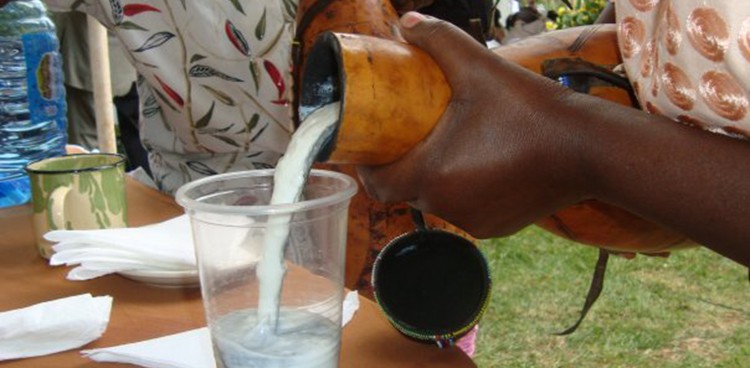
Looks like Chelsea Clinton is not the only daughter to inspire a lovesick Kenyan to offer a US President a marriage dowry of cattle.
Now, hold on—we promise this will relate to cheese. At least dairy.
Kenyan lawyer Felix Kiprono has been pining for Malia Obama since she was 10. He hasn’t so much as dated anyone else since laying eyes on the eldest first daughter. “People might say I am after the family’s money, which is not the case. My love is real,” he told The Nairobian.
Kiprono’s love is so legit that he’s offering 50 cows, 70 sheep, and 30 goats for her hand in marriage. What’s more, his celebration plans won’t include bubbly: “I will not resort to the cliché of popping champagne,” he boldly proclaimed. “Instead, I will surprise her with mursik, the traditional Kalenjin sour milk.”
What’s that now? Mursik, along with a host of other fermented milk beverages, has long been a source of milk preservation and nutrition for various tribal Kenyan communities, especially the Kalenjin—an ethnic group perhaps best known for dominating the world of long-distance running.
Kiprono has promised to teach Malia the domestic art of making mursik, so the First Family-member’s foray into fermented milk production would look something like this:
First Malia would learn how to scrape out a cleaned sotet gourd with osek charcoal made from the embers of cromwo and other indigenous trees. (The flavor of the resultant mursik varies depending on the type of tree branch selected.) Once the gourd is ready, the cow’s (or goat’s) milk is heated to its boiling point to pasteurize it. Next, it is then cooled and sealed in the gourd and set aside for three to five days.
That’s when the charcoal kicks in. It acts as a preservative to prevent spoilage of the milk as it ferments, while at the same time infusing it with a smoky flavor that conceals any unpleasant taste from the gourd and giving it a speckled appearance.
Lactic acid bacteria and yeast get to work transforming it into a thick, yogurt-like beverage. Finally, it’s shaken to smooth out the consistency.
Mursik is served cold alongside hot ugali, a porridge made from maize, millet, and/or sorghum flour. Leftover mursik is used as a starter culture for the next batch of the beverage.
Some credit the success of Kenyan sprinters to the fermented beverage. With that track record, maybe, just maybe, mursik will also win a Presidential daughter’s heart.
For more on making mursik, check out this video from Kenya CitizenTV (which at times veers away from English yet is pretty informative nonetheless):



